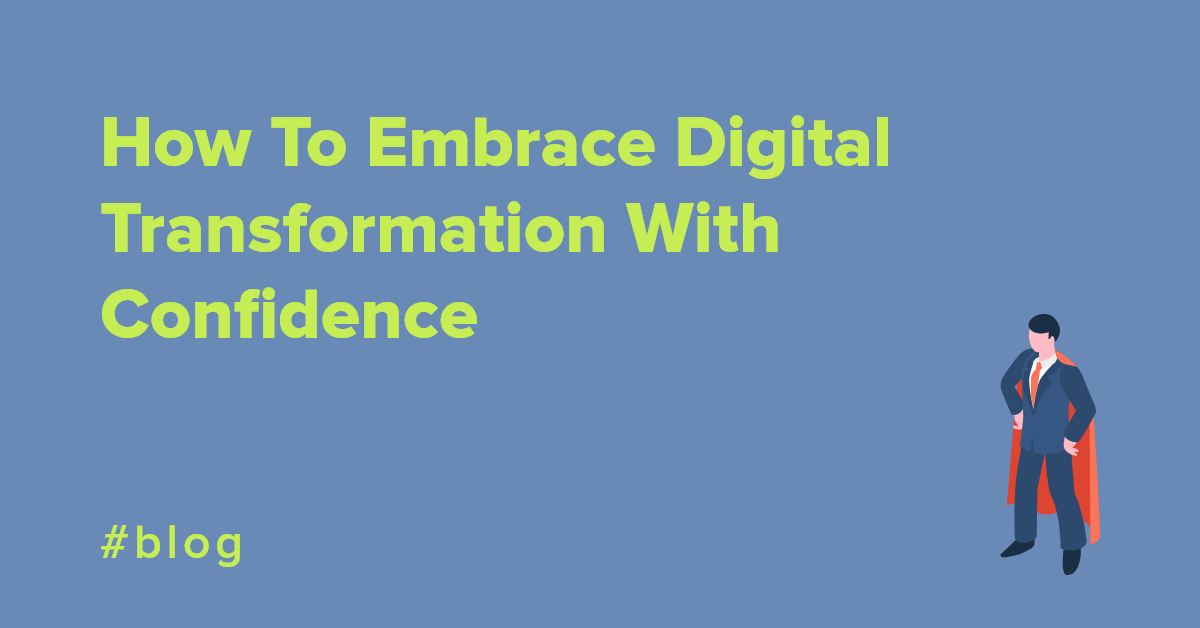We used to think of ‘digital transformation’ as the building of digital channels and the computerization of tasks.
However, it has evolved over the years to do so much more than that. These days, digital transformation is about rethinking processes, so that they’re faster and easier. It’s also about helping process make more use of data.
These digital transformations drive business strategies, fueled by the adoption of modern applications and new cloud environments. It’s an ongoing, and never-ending process that pushes organizations forward.
Let’s take a closer look at digital transformation and how innovative cloud solutions can help your business succeed.
What is digital transformation?
Here’s a quick definition of digital transformation:
Digital transformation is a modernization of processes and infrastructure. It’s a change management strategy; aligning new technology with business operations to meet business goals.
Modernization underpins development and growth. Organizations that continually evolve to improve their infrastructure and processes through digital transformation are the ones that will thrive in an increasingly competitive global market.
The very essence of a change or a transformation is that there are many different routes you can take. So, when it comes to digital transformation in the context of the cloud, why would you stick to just one solution to support your digital business growth?
The unspoken truth is that multi-cloud is the solution, and it’s where organizations are going to end up.
What is a multi-cloud solution?
The concept of a multi-cloud environment is a simple one. It involves spreading all cloud assets – from software to data, and everything in-between - across several cloud-hosting platforms instead of just the one.
Blog: 7 Things No One Tells You About Moving To CloudSome providers are better for specific tasks than others. Solving a problem might be easier in Microsoft Azure rather than Google Cloud, for instance. Or, your data might need to be moved from AWS to Azure for the purpose of integrated machine learning capabilities.
While a multi-cloud solution is easy to understand in principle, it’s not always that way in action. With that in mind, let’s evaluate the challenges and benefits of a multi-cloud environment.
What are the challenges of multi-cloud?
Deliberately spreading your usage across various cloud providers is challenging if you don’t have the right tool to glue the different worlds together:
- Moving your data. Orchestrating data migrations to the cloud requires a well-managed, flexible and robust approach. It’s also important to have the freedom to move data between clouds. To get you started, watch our webinar on Moving 'Something Simple' To The Cloud - What It Really Takes.
- Freedom of movement between cloud providers. Portability of apps and data is a concern. Even minor differences in behaviour between similar services on each platform can be challenging to work around.
- Security risks. There’s an added security risk of moving your workloads across platforms. You’re no longer protecting a single network; therefore, the number of threats increases.
What are the benefits?
Adoption of multi-cloud usage as a digital strategic initiative is rising. Eighty-one percent of public cloud users are utilizing two or more providers. But why is this?
Let’s have a look at the benefits:
- It avoids vendor lock-in by eliminating the reliance on a single provider.
- It gives you choice. A multi-cloud environment combines the best part of each platform, so your business can customize an infrastructure that’s specific to your goals.
- It offers a 360-degree view of your data. Adopting a multi-cloud environment will give your business the visibility and insights you need to implement innovation.
- Better disaster recovery. If the setup of a multi-cloud environment is effective, it will dramatically improve the planning and success of an IT disaster recovery strategy.
- It supports innovation across departments. Forming a unique network infrastructure for your business means that you can support operations across different teams.
As it becomes harder for businesses to find a single cloud provider to meet unique demands, the decision to adopt a multi-cloud strategy becomes more transparent.
Embrace multi-cloud digital transformation with confidence
Digital transformation in the form of new cloud environments will help your business succeed, and the benefits become greater when you connect systems across your whole enterprise. Adopting a multi-cloud solution will enable your business to pick the best tools for the job.
Embracing a multi-cloud environment is not a simple task; it requires large-scale data migrations and complex integrations between systems. CloverDX will accelerate your digital transformation by simplifying the connection and consolidation of your data.
Read more about Digital Transformation with CloverDX
The benefits of a multi-cloud strategy are great if the tools are available to deliver that change. We can handle any data source or format, at any scale, and bring it together.
CloverDX works with your data wherever it’s stored. If you’d like to discuss how we can help you to embrace a multi-cloud solution with confidence, get in touch.










